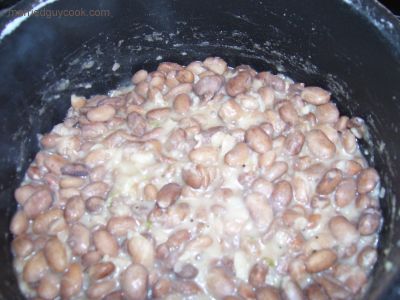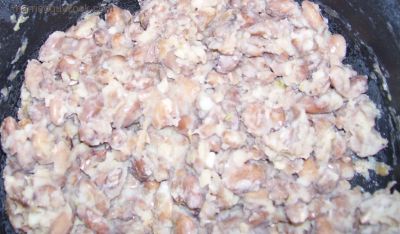Hollandaise Sauce
Here is the post implied by the ending of the recent herb steamed asparagus post, in which I finally tried making hollandaise sauce almost but not exactly as indicated in this recipe. I had bought two bunches of asparagus, and planned to do this with the second one, just because.
Weird, right? It doesn’t smack of frugality, and I have no reason to want hollandaise, having never, as far as I can recall, eaten it before in my life.
The thing is, the perceived difficulty of cooking eggs and keeping them liquid intrigued me. The idea of mother sauces intrigues me, especially since I rock at sauces and gravies generally. The presumed similarity to making homemade mayonnaise intrigues me.
Finally
, it’s part of the quest to make variants of plain old asparagus.
So. The recipe. I used 4 yolks, as it said. Most recipes I perused called for 3 yolks. My eggs were extra large, for what it’s worth, not large. I’ve had a goofy little egg separator for 30+ years and, as far as I can recall, have never used it. Until now! For one egg. Which told me doing it with my hands, as I have seen TV chefs do, was vastly better. The gadget was too small, and failed to separate the white as fully or quickly as my fingers. I saved the whites for another experiment, in a cake, since it was my birthday and I am the cook here.
I got about 3 tablespoons of juice from a lemon I had remembered to buy for the purpose, and used one for the hollandaise. See the aforementioned cake for the fate of the rest.
Now, every other recipe I looked at called either for (mostly) a tablespoon of water or (less often) a tablespoon of cream. Or maybe it was milk. This recipe had neither
, but I used water anyway, and good thing. I could see it being even better with cream or milk.
I used salted butter. I do not as a rule have unsalted in the house. I buy it if I plan something I know calls for it, and care enough to comply. Some recipes specify unsalted. Some do not. I melted it carefully in the microwave, managing to come out with a complete melt that was no more than room temperature. In just one place I saw mention that sometimes clarified butter is used in hollandaise. I thought that sounded right
, so as best I could, I mostly skimmed off the foamy milk solids. (If, like me until relatively recently, you have no idea what is meant by “clarified butter,” that’s all it is: melted butter with the light colored scum you see floating on top skimmed off. It sounds fancier and more intimidating than it is.)
The pinches of salt and cayenne were as directed, though I went very light on the salt, considering the salted butter.
The recipe describes the lemon juice and yolk mixture doubling in volume. I’m not sure mine doubled, though my dubiousness was mooted by seeing that it did increase in volume.
The method described for using a stainless steel pan with a saucepan is great as a makeshift double boiler. Granted, doing this made me pine for a double boiler, and I even found that there are pans sold that come with both steamer and double boiler insets. I checked , since logic suggested the possibility to me.
I would emphasize that pretty much continuous light whisking/stirring is imperative to keep the egg from cooking into solids. It has to cook as a liquid. When it was obviously done
, I set the metal bowl into another bowl with shallow, cool water in it. That arrested the cooking process. Shortly after, I changed the water for warm so the sauce wouldn’t get too cold.
I steamed the asparagus with herbs, but less strongly than I had the first time. I thought the flavor would go well, even though the sauce would add flavor and a change of texture profile. That sounds all fancy.
The result?
It was tasty, but too lemony for me. I can’t imagine it is meant to taste that lemony. It was a bit thicker than perhaps is ideal. And that’s with the water the recipe didn’t include! I could have put in a tiny bit more to thin it
, but didn’t bother. If I make it again, I would start by reducing the lemon. I would probably use milk or cream instead of water. I might experiment with seasoning the sauce. Heck, I’d be interested in using the basic technique for an eggy sauce to diverge into doing my own thing entirely.
Was it hard to make? No. I didn’t find it tricky at all. I can see how it could go terribly wrong, sure. But I had perceived the making of a sauce in which eggs are cooked liquid to be extremely difficult. Anyone paying adequate attention could do it. Now I know.




